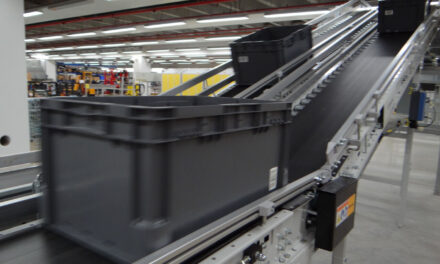Andy Jones, general manager of rotary vane compressor manufacturer Mattei, is advising compressed air users to consider 10 important factors, which can help them use the utility efficiently, cost-effectively and safely:
1. Understand electrical consumption
Some businesses might have a misconception that compressed air is ‘free’ once they have invested in the equipment. In reality, the initial purchase actually makes up a very small part of the total lifetime costs of a compressor; the main cost will always be the energy required to produce the compressed air.
 The electricity consumed during operation over a five-year period accounts for around 75 per cent of the total cost of ownership, including the initial capital outlay for the compressor, therefore it is important to consider the efficiency of the compressor and not just its capital cost.
The electricity consumed during operation over a five-year period accounts for around 75 per cent of the total cost of ownership, including the initial capital outlay for the compressor, therefore it is important to consider the efficiency of the compressor and not just its capital cost.
2. Regularly assess the system
It’s essential for businesses to understand how much compressed air they use, how much it costs them and if the compressors are appropriate for their production processes – but it’s likely the vast majority don’t.
 The best way to assess a compressed air system is through data logging, or a more detailed energy audit. The forthcoming ISO 110011 standard, Compressed air – Energy efficiency – Assessment (due to be implemented in 2013), will hopefully encourage end users to assess their compressed air systems and subsequently take actions to reduce their energy use. It should also standardise the energy audits offered by compressed air companies.
The best way to assess a compressed air system is through data logging, or a more detailed energy audit. The forthcoming ISO 110011 standard, Compressed air – Energy efficiency – Assessment (due to be implemented in 2013), will hopefully encourage end users to assess their compressed air systems and subsequently take actions to reduce their energy use. It should also standardise the energy audits offered by compressed air companies.
3. Check whether air demands are fixed or variable
Some companies are using variable speed compressors when fixed speed machines would be more appropriate, and vice versa. Variable speed compressors will only save energy if there are true peaks and troughs in the demand for air, and if these variations fall within the efficient working band of the compressor. Again, data logging can reveal which type of compressor is most appropriate.
4. Decide what air quality is needed or appropriate
In recent years we have seen an increase in demand for ‘oil-free’ compressors to produce ‘oil-free’ compressed air. But before investing in costly equipment we would urge purchasers to thoroughly assess the actual purity of air required and specify it using ISO 8573-1:2010 to see if ‘oil-free’ air is needed and, if it is, if class one rather than class zero would be sufficient.
5. Ensure the compressor is installed and sited correctly
The efficiency of any compressor is largely dependent on the way it’s installed, and where it’s sited.
One of the main considerations should be air flow into the compressor; it needs to be unrestricted, cool, reasonably clean and free from solid and gaseous impurities. The distance between the compressor and where the compressed air is actually used can have important implications too. Meanwhile, pipes should be suitably sized for the air delivery capacity of the compressor/s, with bends kept to an absolute minimum.
6. Check noise levels
Noise levels should be considered to ensure employees aren’t adversely affected. All compressor manufacturers have to state the noise levels in accordance to international standards, with the current one being EN ISO 2151:2008. This means it is relatively straightforward to check the suitability of a compressor for a particular environment.
7. Regularly check for leaks
In many companies in excess of 30 per cent of air generated is wasted through leaks. Leaks are simple to identify and rectify, and it’s cost-effective; the average cost of a Mattei leak detection survey is less than 10 per cent of the overall leakage costs. Leak detection surveys should ideally be done on an annual basis, and always before a new compressor is installed.
8. Undertake regular services and maintenance
If a compressed air system isn’t properly maintained on a regular basis it will not run as efficiently as it should; this will increase its running costs and it could end up posing a danger – in very extreme cases a poorly maintained compressor might even catch fire or explode. It is for this reason that written schemes of examinations are a legal requirement under the Pressure Systems Safety Regulations 2000.
9. Always use compressed air safely
We still hear of dangerous practices going on, such as people using compressed air to dust off machinery, work benches and even their clothes. If compressed air penetrates the skin and gets into the bloodstream an air bubble could reach the heart or lungs, which could prove fatal. And, as it travels at a phenomenal speed, if it hits an eye or an ear it may lead to blindness or loss of hearing respectively.
10. Recover heat where possible and appropriate
Compressors generate a lot of heat, and in some installations this can be recovered and put to good use in the production process, for water heating, for example, or – although not as efficient – local space heating.
For further information visit www.mattei.co.uk or call 01789 450577.




